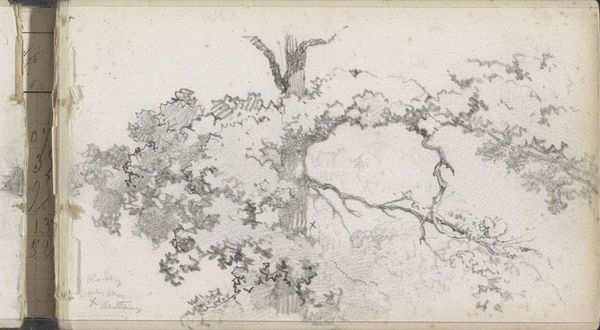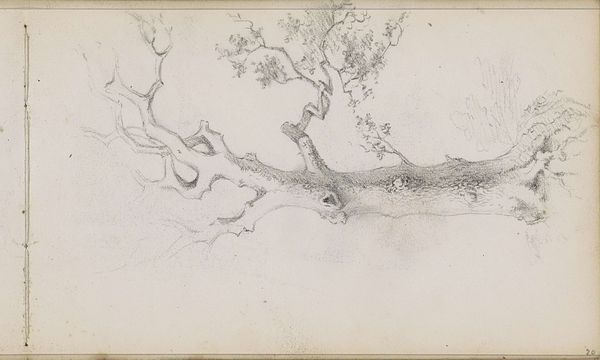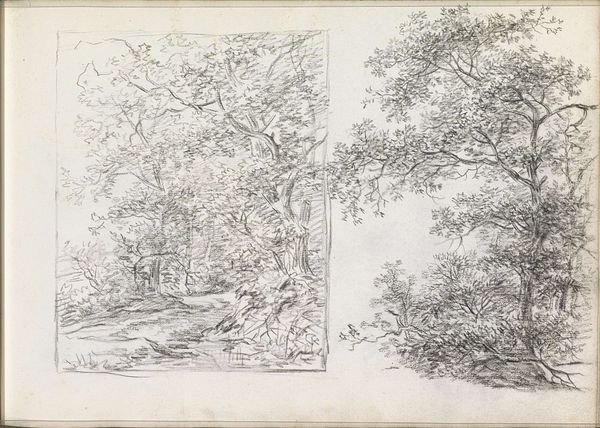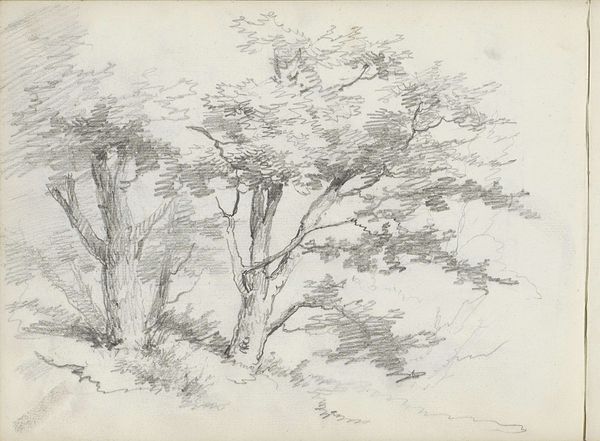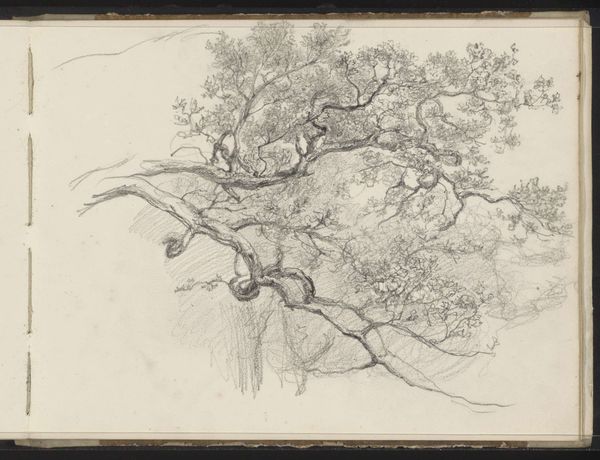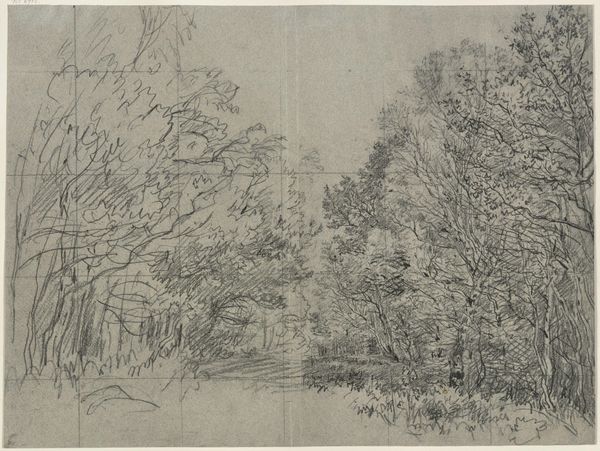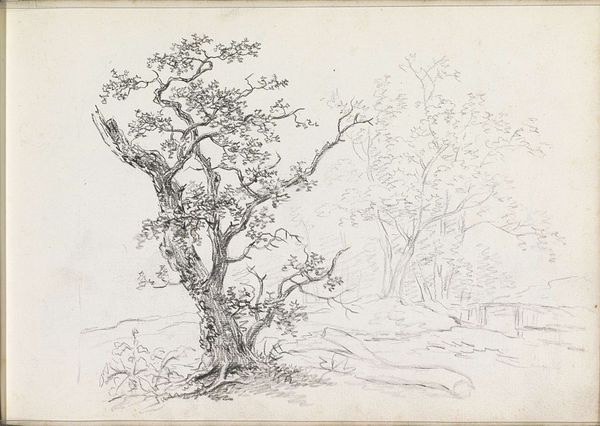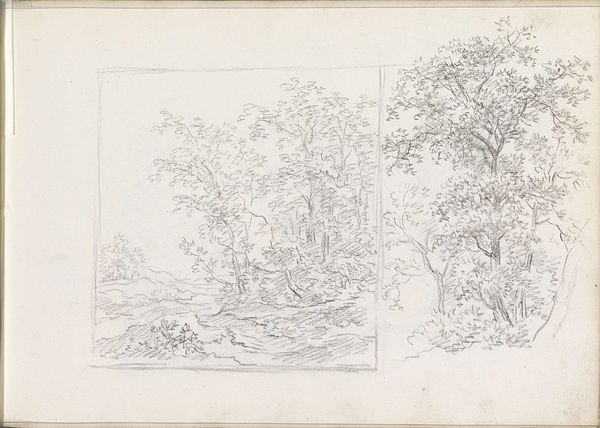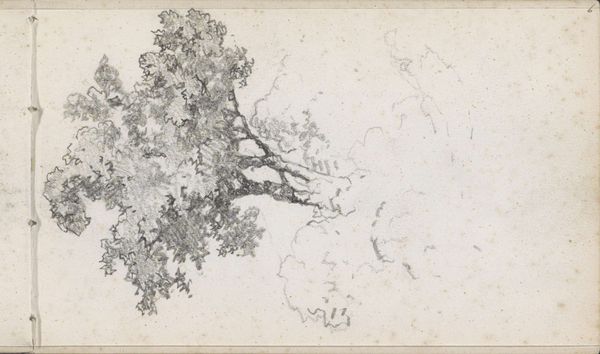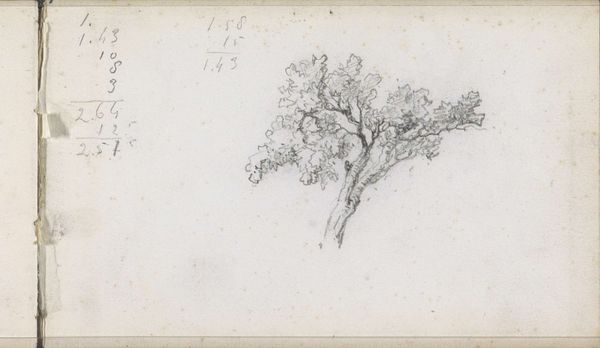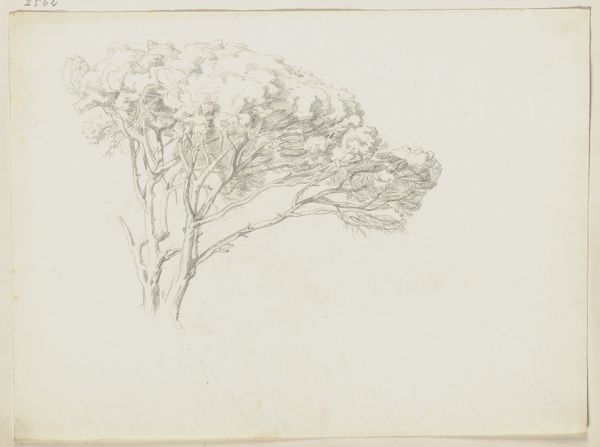
Copyright: Rijks Museum: Open Domain
Editor: This is "Boom in blad" – which I think translates to "Tree in leaf" – a pencil and pen drawing from Maria Vos’s sketchbook, placing it somewhere between 1834 and 1906. The composition’s interesting – one side feels full and bursting with detail while the other's really sparse and almost fades away. What catches your eye? Curator: That ghostly mirror image on the left is incredibly evocative, isn't it? It speaks to me of memory, of something fading but still present. The tree on the right is vibrant, almost joyous in its detail, but that faint echo reminds us that everything changes, decays. What do you make of her choice to put them side-by-side like that? Editor: I hadn’t thought about decay, but now that you mention it, the fading sketch almost feels like a ghost of the future, or a memory of the past! Do you think that the contrast represents the romantic style in landscape art, a focus on both the beauty and impermanence of nature? Curator: Absolutely! Think of Romanticism’s fascination with ruins, with the sublime power of nature, simultaneously creative and destructive. Vos is capturing that duality on a single page, the bloom and the potential for blight intertwined. Notice, too, the meticulous detail in the ‘present’ tree. Did you happen to know that she later specialized in painting incredibly realistic still lifes? Perhaps this showcases that skill even early in her career? Editor: That makes so much sense! Seeing both images together lets you read into what it might represent, rather than it just being a nice drawing. Curator: Exactly. Art isn't just *what* we see, but *how* it makes us feel, what it makes us think about our place in the world. It shows you nature changing constantly but never ending, a theme Vos touches upon very deeply and successfully in this one sketch from her sketchbook.
Comments
No comments
Be the first to comment and join the conversation on the ultimate creative platform.


